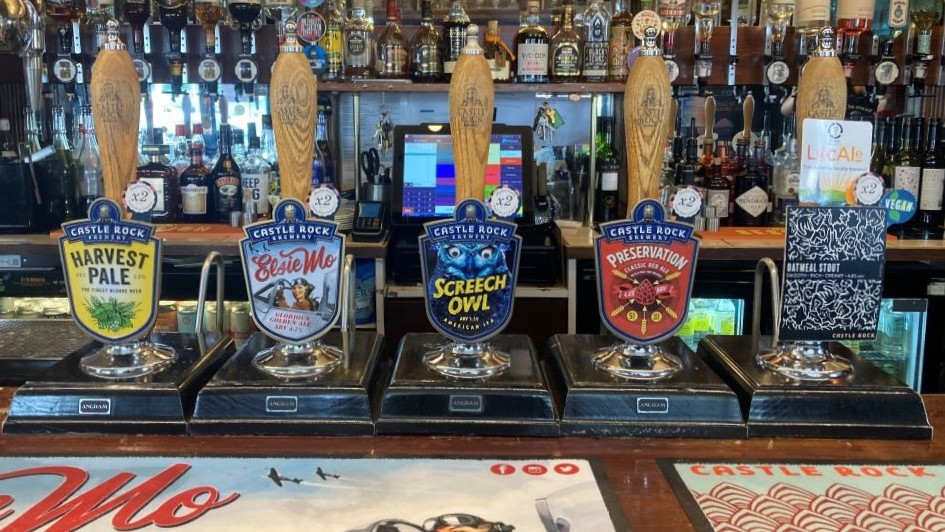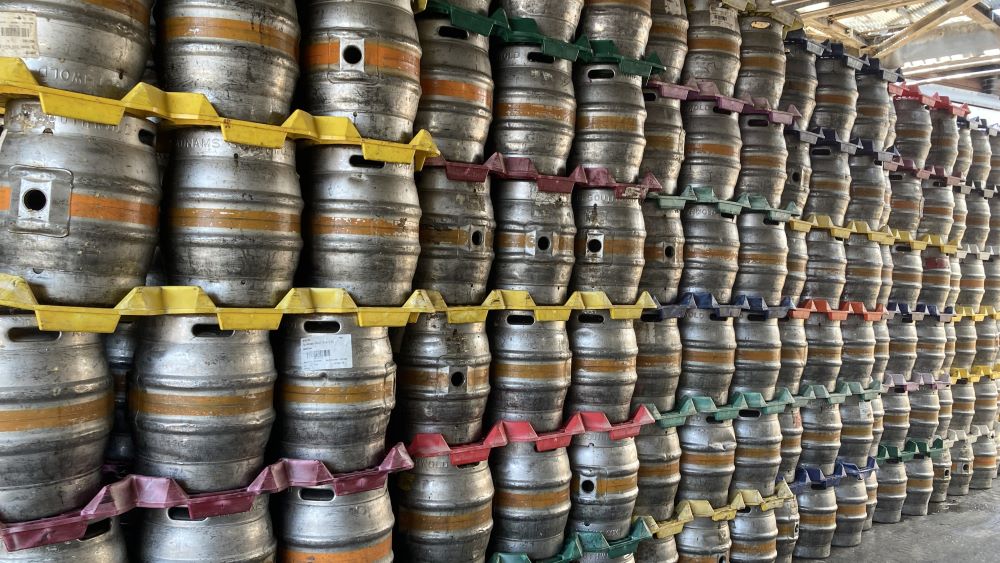
Cask beer is a unique format of live draught beer that, at its best and freshest, delivers a subtlety and complexity of flavour in session beers of modest strength unmatchable in any other way. Rarely found in the beer world at large, it retains a significant commercial presence only in the UK, where it famously survived efforts by big brewery groups to phase it out in the 1960s and 1970s, provoking a vociferous consumer campaign. Though in its home country it’s once again struggling to retain its profile amid a new wave of characterful, quality craft beers in keg, bottle and can, many brewers and drinkers remain fascinated with cask.
But despite all the attention from beer enthusiasts over many decades, cask remains a much-misunderstood format, whether revered as a supposed inheritor of ancient brewing traditions or lazily dismissed as a warm, flat beverage for old men. While numerous books, periodicals and websites recommend great cask beer and places to buy it, and almost every consumer book on British beer feels obliged to include at least a brief outline of cask dispense, there’s never been a comprehensive work for the general reader going into detail about how cask evolved, how it’s made and served today and what exactly makes it so different and special.
Until now. My next book, Cask Beer: The real story of Britain’s unique beer culture, due for publication in summer 2023, aims to do just that. It draws on many decades of thinking, talking and writing about cask as well as drinking it, supplemented by much recent original research. I’m currently pursuing a busy itinerary visiting both old-established family independents which have long relied on the format as well as cutting-edge newcomers that make a point of retaining it in their range. Besides brewers, I’m talking to other key figures like expert pub cellar managers, campaigners, beer educators and brewing scientists. And I’ve been digging into the past, scouring historical brewing texts to pin down the evolution of today’s production methods.

As many of its drinkers know, cask beer is still fermenting in the vessel from which it’s served. This is often termed a ‘secondary fermentation’, even by some brewers, but a closer examination reveals it’s almost always a continuation of the primary fermentation in the brewery, with the same yeast. So it’s not too far of a stretch to think of the cask as an extension of the brewery’s fermentation tanks – no wonder it can taste so fresh. I’ve been looking in detail at the different ways brewers create the conditions for their living product to thrive.
This also partly explains why the way cask is treated after it’s left the brewery makes so much difference to how good it tastes. Again. most cask drinkers know that cellar skills are important, but few know what really goes on below or behind the bar. It’s here that the beer achieves the right level of carbonation when some of the gas produced by fermentation is released. Thanks to the laws of physics, this means it can be served at a slightly warmer temperature than other types of beer. Not flat and warm, please, but cellar-cooled and gently but firmly sparkling, improving its drinkability and helping you appreciate the subtleties of its aroma and flavour. I’ve been exploring that hidden world of shives, spiles, stillages and pythons and the people that master them in the service of a perfect pint.

Although all brewers follow the same basic process, the precise ways they do it are hugely varied in their details. Some cask breweries are ultra-modern installations with gleaming stainless steel vessels under precise computer control. Others are time capsules of an earlier brewing age, with mellowed wood and copper and still-functioning machinery installed a century or more ago. All of them depend on the brewer’s knowledge, experience and artistry to produce consistently good beer. The book will profile iconic cask breweries old, new and middle-aged, their beers and how they make them.
Then there’s the history, neglected partly thanks to the assumption that cask “has existed from the time brewing was first instituted in this country,” as a contributor to a 1923 manual for licensees puts it*. This is true in the sense that beer still containing live yeast on consumption has always been with us, as it wasn’t until the later 19th century that brewers had any choice in the matter. But cask as an optimised method of delivering fresh, lively session ales to a mass market is really a product of that same era, when brewers and drinkers in other countries were shifting loyalties towards comparably lively and refreshing pale lagers. Before this, much more British beer was brewed strong and matured for long periods in wood, inevitably undergoing mixed fermentations with wild yeasts and bacteria. Why did tastes change in favour of ‘milder’, fresher beers? Why did British brewers continue with cask for so long, and British drinkers resist the allure of lager well into the 20th century? I can’t promise to answer such questions definitively, but I’ll certainly give them an airing.
The book will also consider the future of cask. As anyone who has ever been served a flat, vinegary pint, or even a just drinkable but indifferent one, will appreciate, some of the things that make cask so fascinating – its need for careful management, its unpredictability and vulnerability as a living product – can also be its undoing. As a veteran cellar manager told me, quick turnover is essential to good cask, so the less we drink, the more the risks of the format become apparent. And there are now many more flavourful non-cask beers to tempt discerning drinkers, at higher prices than cask which, despite its challenging economics, is still expected to be the cheapest beer on the bar.

Breaking that vicious cycle means recognising that, as a brewer recently expressed it to me, cask is the ultimate craft beer. The work that goes into brewing and serving it, and the influence of a conscientious cellar keeper on the final character, should be celebrated as the hallmarks of a product just as particular and artisanal as a Belgian lambic or a one-off hazy pale ale, and just as relevant to today’s more discerning market. Education is at the heart of this, and I’ll be serving my purpose as a beer writer if the book helps increase understanding and appreciation of one of the world’s great treasures of beer.
The current plan is to launch Cask Beer: The real story of Britain’s unique beer culture at the Great British Beer Festival in August 2023. More news as I have it.
* “A Brewery Cellars Manager”, ‘Ales and stouts and hints on cellar management’, in W Bently Capper (editor) 1923, Licensed Houses and their Management Volume II, London: Caxton, p11





A book that has needed to be written for the past 50 years. Well done, Des, fpr having the courage to write it
Thanks Martyn, hope you’re not disappointed and I don’t get too many things wrong!